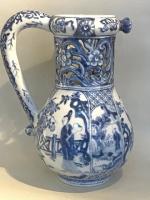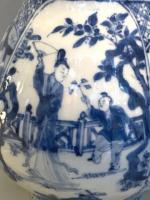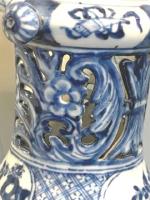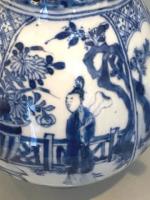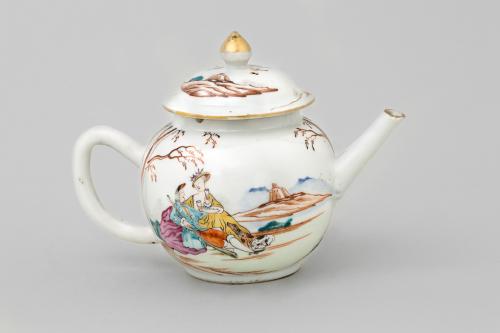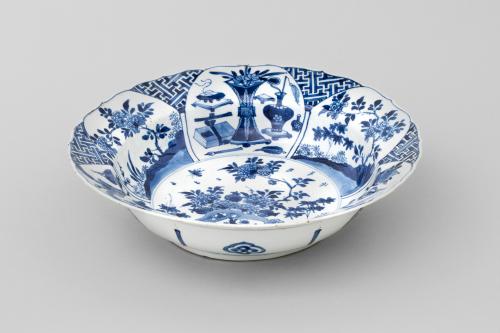
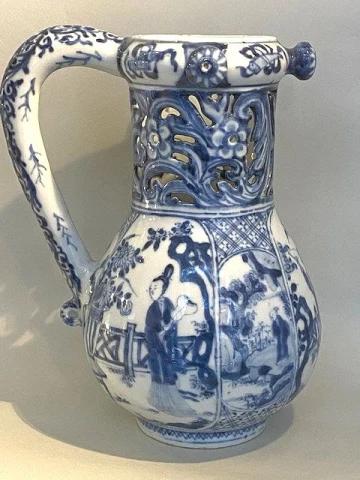
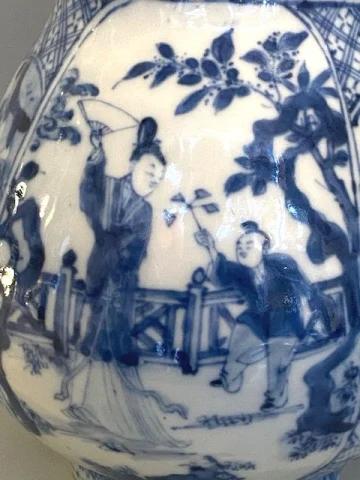
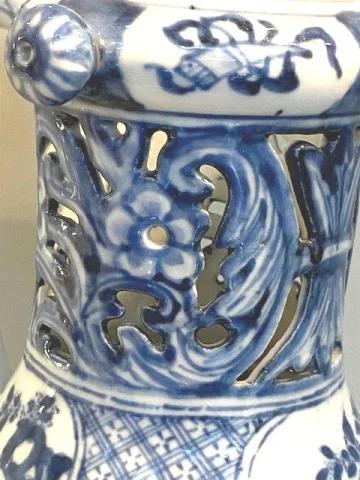
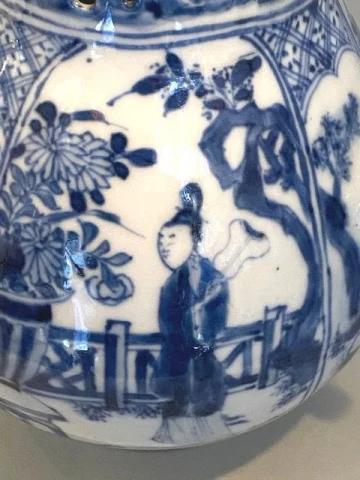
Price on application
This object is eligible for a Certificate of BADA Provenance
The BADA Standard
- Since 1918, BADA has been the leading association for the antiques and fine art trade
- Members are elected for their knowledge, integrity and quality of stock
- Our clients are protected by BADA’s code of conduct
- Our dealers’ membership is reviewed and renewed annually
- Bada.org is a non-profit site: clients deal directly with members and they pay no hidden fees
A Rare and Fine Chinese Blue and White Puzzle Jug, Kangxi (1662-1722).
After a Delft prototype, the baluster body decorated with three large panels each containing a lady holding a fan in a fenced garden, one with the addition of a little boy playing, the panels alternating with three narrow panels of a figure in a watery landscape, the neck in floral scrolled pierced openwork, the tubular rim with three spouts, with 'hollow' loop handle.
LITERATURE
Puzzle or trick vessels are known in European pottery at least as early as the 15th century. One of the earliest extant examples is an Italian maiolica bowl in the Wallace Collection, tentatively attributed to Deruta, circa 1480‑90, for which see Norman, Catalogue of Ceramics 1, C23. They were used as curiosities for entertainment. In this puzzle jug the spouts of the jug are connected to the body through the hollow handle. If the jug is tilted to the back and one drinks from one spout while one closes the other two, liquid can be retrieved from the jug.
Wood models of puzzle jugs were sent from Europe to China by the East India Company and private traders for copying. Sometimes the Chinese potter was not informed of the trick and misinterpreted as here. There is only one hollow spout instead of three. For another example of this failure to see the trick in another version see our catalogue, click here.
For a very similar example to the one shown here, see the Metropolitan Museum, New York, click here.
The Metropolitan one was also exhibited in New York at the China Institute in America. "China Trade Porcelain: A Study in Double Reflections," October 25, 1973-January 27, 1974. Also Another example, from the early eighteenth century, is in the Museum Het Princessehof in Leeuwarden (inv. no. NO 590).
Dimensions
Height: 20cms, 8 inchesStock number
BH31The BADA Standard
- Since 1918, BADA has been the leading association for the antiques and fine art trade
- Members are elected for their knowledge, integrity and quality of stock
- Our clients are protected by BADA’s code of conduct
- Our dealers’ membership is reviewed and renewed annually
- Bada.org is a non-profit site: clients deal directly with members and they pay no hidden fees


